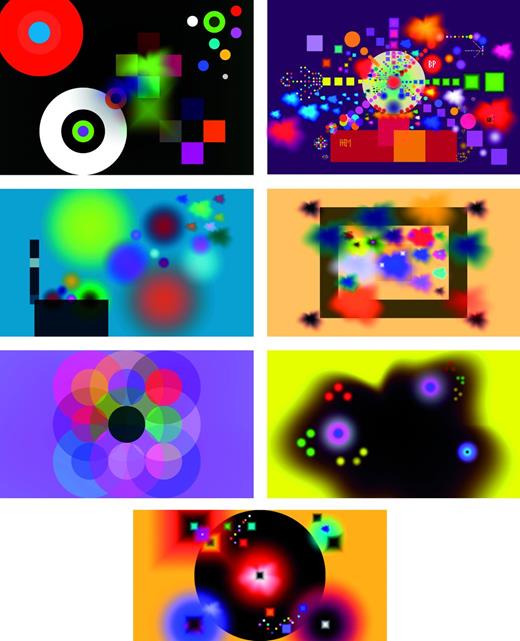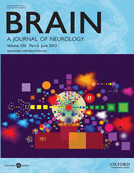-
PDF
- Split View
-
Views
-
Cite
Cite
Andrea Kübler, Elisa Holz, Loic Botrel, Addendum, Brain, Volume 136, Issue 6, June 2013, Pages 2005–2006, https://doi.org/10.1093/brain/awt156
Close - Share Icon Share
The brain paintings were created with a brain–computer interface based on event-related potentials (P300-BCI), which allows for communication without any muscular control. The 72-year-old artist, Hhem, uses the P300-BCI at home with remote supervision from the BCI lab at the University of Würzburg. She has always been interested in Fine Arts and used to paint, make pottery and write poems. In 2007 she was diagnosed with amyotrophic lateral sclerosis (ALS) which, as expected, changed her life completely through the development of almost total motor paralysis within a few years. Thus, Hhem had to face not only the loss of autonomy that accompanies increased dependence on others, but also the loss of artistic expression. In recent years Hhem has been artificially ventilated and uses an eye-tracker for communication and surfing the internet. Supported by her family, she lives at home. In 2012 we installed a domestic brain–computer interface controlled Brain Painting application. She says:
It is important to note that the Brain Painting matrix provides only limited options for selection. These include cursor position, colour, size of an object, zooming in and out, objects, and correction. Objects can only comprise circle, square, and blobs. Thus, the variety of paintings depicted here emerges from this limited set guided by Hhem's creativity. Before Hhem can place an object on the digital canvas, all the properties of the object must be determined (position, colour, size, transparency). The final step of selecting the object transfers it to the canvas. Hhem has created ∼50 paintings and provides replies to our standard questions for evaluation of the brain–computer interface after each session. With this endeavour she also contributes to an analysis of the requirements and obstacles for long-term independent home use of brain–computer interface. The ‘Brain of the Clairevoyeur’ was created early in 2013 as a contribution to the Annual Meeting ‘Psychologie und Gehirn’ (Psychology and the Brain) in Würzburg, Germany. A selection of her paintings will be shown at the Meeting. Hhem's first full exhibition will be in Easdale Island, Scotland, in July 2013.‘Brain Painting enriches my life, makes me creative again, and more alive. It makes me happy and free. I am using the Brain Painting 1 to 3 times per week, but if I could, I would use it every day. I have always loved colours, so Brain Painting not only gives me back indulging in colours, but it is also a challenge. Being very emotional and spontaneous, it is nevertheless really hard work for me to concentrate and be systematic’.



